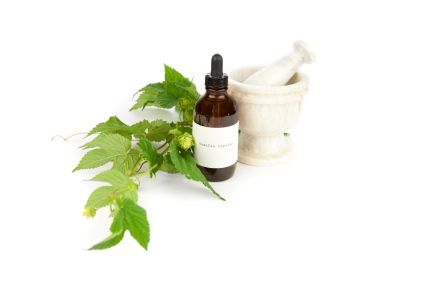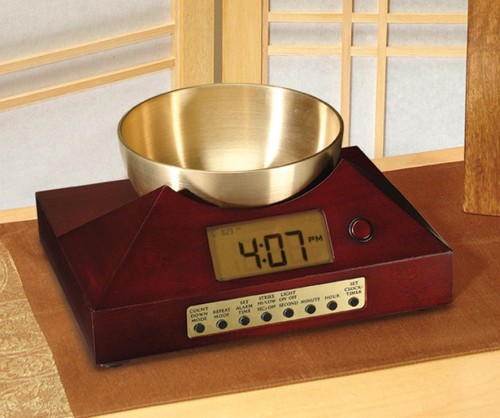Late autumn’s seasonal trends-dropping temperatures, fading light, and your body’s dipping defenses-invite all manner of maladies: colds and coughs, debilitating flus, and the lingering malaise known as the winter blues. But with a few herbal tinctures — simple yet powerful remedies that you can make yourself — you’ll be set up to stave off these ailments and, when they do find a foothold, minimize your discomfort and speed up your recovery.

winter remedies
Tinctures, which are concentrated liquid extracts of medicinal plants, remain my favorite remedies for acute, wintertime ailments because of their sheer potency. Taken by the dropperful, they work well, and they work fast. Also called herbal extracts, tinctures have been made for thousands of years by soaking fresh or dried herbs in a solvent, such as vodka or brandy, to extract the plants’ medicinal properties. While herbal-tincture manufacturers use more complicated, exacting methods, the traditional technique is simple. It requires only easy-to-find ingredients and common kitchen tools, yet makes some of the most effective tinctures available — for pennies per dose.
Medicinal herbs can be tinctured alone — a whole-plant echinacea tincture will serve you well — or with other compatible herbs. The herb combinations here are among my most trusted, time-tested remedies. Echinacea, goldenseal, and turmeric make up Super Immune Support, my standby for fending off infections. Cold and Fever Fighter contains elder, yarrow, and peppermint to help ease colds and fevers. Cough and Sore Throat Soother features soothing, lung-supportive mullein, licorice, and wild cherry bark, plus ginger for a little zest. Garlic, onion, ginger, cayenne, and horseradish give Fire Cider its warming, infection fighting kick. And Mood Booster, for easing seasonal depression, includes hawthorn, oat tops, lemon balm, and St. John’s wort
Whether you make one of these recipes or all five, keep in mind the two essential principles of herbal medicine making. First, quality ingredients make quality products. If you can’t grow your own herbs, buy them from reliable growers or distributors. Likewise, when choosing your solvent, the medium used to extract and deliver the plants’ medicine, choose the best. Second, but just as important, intention matters. Native American healers, who used many of the herbs in these formulas, had a deep reverence for the plants’ healing powers. When they dug the plants, they did so with respect and prayer, and when they made them into medicine, they also prayed. Without prayer, they said, the plant’s medicine — its essence — stayed in the ground. Among people who use “green medicine” today, there is still a deep sense of respect for the plants. I invite you to share this feeling as you gather your herbs and brew your tinctures. In my experience, herbal remedies made with clear intention and an appreciation for the plants are much more effective.
Simple Tincture Making
1. Gather the materials.
When people first start making tinctures, they often go overboard and make gallons. But tinctures are highly concentrated and taken in very small doses — a little goes a long way. To make about a pint of tincture, you’ll need a clean, dry, quart-sized jar with a tight-fitting lid, enough herbs to fill the jar halfway, and roughly a pint and a half of solvent (the herbs will soak up some solvent). Most of my formulas call for 100-proof brandy or vodka, both excellent solvents. If you prefer not to use alcohol, you can substitute vinegar.
2. Prepare the herbs.
If you have any fresh herbs, use them. High-quality dried herbs, however, are just as potent, and available year-round. If you are using fresh herbs, rinse them with water to remove any dirt, then chop them finely. (Dried herbs are usually finely chopped when you purchase them.) Fill your jar halfway with herbs. For a strong, effective tincture, be sure the jar is densely filled.
3. Add the solvent.
Pour the solvent over the herbs until they’re completely covered, then add an additional 2 to 3 inches of solvent. The herbs must be completely submersed to prevent bacteria from growing. Cover the jar with a tightly fitting lid. Herbs often swell as they soak up the solvent; if they start to “emerge” above the liquid, add more solvent. Note: If using vinegar, as in Fire Cider, warm it on a stovetop before pouring it over the herbs; this helps facilitate the release of medicinal constituents.
4. Let the tincture sit for 4 weeks.
During the process of soaking the herbs in the solvent, the plants soften and break down (a process known as maceration), releasing their medicine. Most Western herbalists recommend letting tinctures macerate for 4-6 weeks. In Chinese medicine and several indigenous traditions, however, herbs are left to soak for months, even years. I have found that the longer tinctures macerate, the more effective they are, so consider a month your minimum. When starting the maceration process, label and date your jars so that you remember when you started.
5. Shake daily, with intention.
Shaking the tinctures while they’re soaking facilitates the breakdown of medicinal constituents and prevents the herbs from packing down at the bottom of the jar. It’s also an invitation to add some of the old magic to the science of herbal medicine. When you shake your tinctures, do so with your best healing intention. You can sing to your tincture jars, stir them in the moonlight or the sunlight, wave feathers over them — whatever you feel moved to do. Your remedies will be the better for it.
6. Strain the herbs.
After at least 4 weeks, your tincture will be ready for use. Line a stainless-steel strainer with cheesecloth or muslin, and place over a large glass jar or measuring cup. Pour the liquid slowly through the strainer. When finished straining, squeeze the herb-filled cheesecloth or muslin to wring out every drop. Reserve the liquid — this is your medicine — and discard or compost the herbs. Pour the finished tincture into a clean, dry glass jar with a tightly fitting lid; Mason jars work well, as do amber-colored glass jars (available at herb stores or online). Label your tincture with the contents and date.
7. Store the tincture properly.
When stored properly, tinctures last for years. Both light and heat can break down the medicinal components, so keep your jars of tinctures in a cool, dark place. It’s a good idea to keep a small supply of the tincture ready for use in a 1- or 2-ounce amber-colored bottle with a dropper top (available at herb stores or online).
Dosage and Use
Tincture dosage varies depending on the individual and the herbs being used. For chronic problems and for remedies you’re using as a tonic, such as Mood Booster, the general adult dosage is 1/2 to 1 teaspoon three times daily. For acute ailments, such as colds and flus, small, frequent doses are much more effective: for adults, 1/4 to 1/2 teaspoon every hour. Tinctures should be diluted in a small amount of warm water; they’re very strong tasting, so most people prefer to take them “down the hatch” rather than sipping them.
Solvents
The solvent is the liquid used to extract the herbs’ medicine. There are two solvents used in these recipes, each with different benefits.
Alcohol
A potent, effective solvent, alcohol extracts most plant constituents, including fats, resins, waxes, and most alkaloids (some of the strongest plant compounds). The body rapidly assimilates alcohol tinctures, and their effects are quickly felt. Furthermore, alcohol makes an excellent preservative, maintaining the integrity of the tincture for many years. Brandy and vodka are perfect for the traditional method of tincture making; both can be purchased at 100 proof, which provides an ideal alcohol-to-water ratio. (Water extracts many important constituents, like vitamins and volatile oils.) For preservative properties and extraction purposes, you must use at least 50-proof alcohol.
Vinegar
As a food, vinegar is completely nontoxic, and well tolerated by almost everyone. While it is not as strong or effective a solvent as alcohol (it does not break down as many plant components), it’s a good alternative for alcohol-sensitive people and for children. You can integrate vinegar tinctures into your daily diet, using them as a salad dressing (use organic apple-cider vinegar if possible). Most literature reports that vinegar tinctures have a short shelf life. My experience, however, has been that when stored in a cool, dark place, they will last for several years.
Wintertime Formulas
Note: If you have a serious condition, are pregnant, or take medication, consult your health-care provider before using these or any herbal remedies.
Super Immune Support
Take 1/4 to 1/2 tsp. per hour at symptom onset.
Solvent: 100-proof vodka/brandy
2 parts echinacea root, flower, and leaf
1 part turmeric
1 part cultivated goldenseal root (Use cultivated goldenseal; this herb has been over-harvested.)
Cold and Fever Fighter
Take 1/4 to 1/2 tsp. per hour at the onset of symptoms.
Solvent: 100-proof vodka/brandy
1 part elder flower and elder berry
1 part peppermint leaf
1 part yarrow flower and leaf
Cough and Sore Throat Soother
Take 1/4 to 1/2 tsp. per hour at the onset of symptoms.
Solvent: 100-proof vodka/brandy
2 parts mullein leaf
1 part licorice root
1 part wild cherry bark
1/2 part ginger root
Fire Cider
Take 1/4 to 1/2 tsp. per hour at the onset of a cold, or as a daily warming tonic. Makes a great salad dressing.
Solvent: apple-cider vinegar
1 part garlic
1 part onion
1/2-1 part freshly grated horseradish
1/2 part ginger small pinch cayenne
honey to taste (add to finished product)
Mood Booster
To prevent or ease the winter blues, take 1/2 to 1 tsp. three times daily.
Solvent: 100-proof vodka/brandy
2 parts hawthorn berry, plus flower and leaf if available
2 parts lemon balm
1 part St. John’s wort
1 part milky green oat tops
adapted from Body + Soul, Nov/Dec 2005

Zen Timepiece with Gong Bowl, a Timer and Alarm Clock